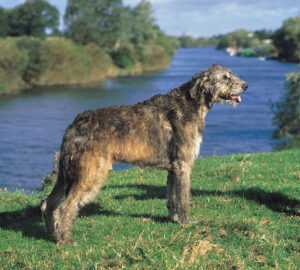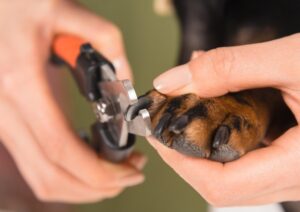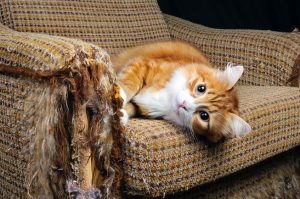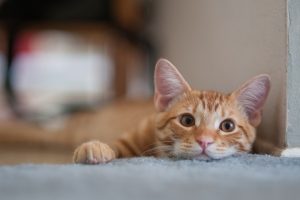Posts Tagged ‘emergency vet’
The Importance of Regular Veterinary Check-ups
 Regular veterinary check-ups are crucial for maintaining the overall health and well-being of your pets. These routine visits play a key role in preventative care and early detection of health issues. Here are some reasons why regular veterinary check-ups are important.
Regular veterinary check-ups are crucial for maintaining the overall health and well-being of your pets. These routine visits play a key role in preventative care and early detection of health issues. Here are some reasons why regular veterinary check-ups are important.
Preventative Care:
Regular check-ups allow veterinarians to administer vaccinations, parasite control, and dental care. Preventative measure can help protect your pet from various illnesses, ensuring they lead a healthier longer life.
Early Detection of Health Issues:
Pets, like humans, can develop health issues that may not be immediately apparent. Regular check-ups enable veterinarians to detect potential health problems early, often before symptoms become severe. Early detection can significantly improve the prognosis and treatment outcomes.
Disease Screening:
Veterinary check-ups may include screenings and tests for common pet diseases. These screenings can help identify conditions such as diabetes, kidney disease, and certain types of cancer in their early stages, allowing for timely intervention.
Dental Health:
Dental issues are common in pets, and they can lead to various health problems if left untreated. Regular veterinary visits often include dental examinations and cleanings, promoting good oral health and preventing dental diseases.
Nutritional Guidance:
Veterinarians can provide guidance on proper nutrition based on your pet’s age, breed, and health condition. A well-balanced diet is essential for maintaining your pet’s overall health and preventing nutrition-related issues.
Behavioral Assessment:
Veterinarians can assess your pet’s behavior during routine visits. Changes in behavior may be indicative of underlying health issues and addressing them early can prevent further complications.
Weight Management:
Maintaining a healthy weight is crucial for your pet’s well-being. Regular check-ups allow veterinarians to monitor your pet’s weight and provide guidance on nutrition and exercise to prevent obesity-related health issues.
Senior Pet Care:
As pets age, their healthcare needs may change. Regular check-ups become even more critical for senior pets to monitor and address age-related conditions, such as arthritis, dental problems, and organ dysfunction.
Client Education:
Veterinary visits are an opportunity for pet owners to learn about their pet’s specific needs, behaviors, and potential health risks. Education from veterinarians empowers pet owners to provide the best care possible.
In summary, regular veterinary check-ups are essential for preventative care, early detection of health issues, and ensuring that your pets lead healthy and happy lives. Establishing a consistent schedule of veterinary visits can contribute significantly to the overall well-being of your beloved companions. Contact our office today to schedule yours or if you have any questions.
Dr. Olsen’s Breed Spotlight: The Irish Wolfhound
 For this next breed spotlight, I will be introducing you to the Irish wolfhound, likely for the first time. This dog is calm, dignified, and the tallest breed of dog (sorry Great Danes). Early ancestors of Irish wolfhounds were fearless, big-game hunters who could dispatch a wolf in single combat. Today, they are the most serene and agreeable of companions.
For this next breed spotlight, I will be introducing you to the Irish wolfhound, likely for the first time. This dog is calm, dignified, and the tallest breed of dog (sorry Great Danes). Early ancestors of Irish wolfhounds were fearless, big-game hunters who could dispatch a wolf in single combat. Today, they are the most serene and agreeable of companions.
The amiable Irish Wolfhound is an immense and muscular hound. They are built along classic Greyhound lines, capable of great speeds at a gallop. A male might stand nearly three feet at the shoulder and can weigh up to 180 pounds. Females will run smaller but are still a very large dog. They have a rough and hard coat that can come in many colors. They can be white, gray, brindle, red, black, and fawn. Irish wolfhounds are way too serene to be fierce guard dogs, but the mere sight of the size of these dogs are enough to deter intruders. Irish wolfhounds are characteristically patient with kids, but their size does require supervision when they are around small children.
The history of this wolfhound goes back to the breeding of indigenous large dogs of Britain to the Middle Eastern coursing hounds that were bartered around the known world in the earliest days of international trade. By the time the Roman Empire had gained a toehold in the British Isles, the giant hounds of Ireland were already long established. In the year 391, the Roman consul received a gift of seven of these hounds that “all Rome viewed with wonder”. These majestic hunters, whose motto was “gentle when stroked, fierce when provoked”, were used on such quarry as the now-extinct Irish elk, a massive, ferocious beast said to stand six feet at the shoulder. In 15th-century Ireland, wolves were overrunning the countryside. The Irish hounds, already renowned big-game hunters, began to specialize on wolves. By the late 1700s, when wolves and other big-game animals of Ireland were hunted to extinctions, Irish wolfhounds lost their job and nearly went extinct themselves. This is a case of a breed doing its job too well for its own good. In 1862, British army captain George Augustus Graham began scouring the country for remaining specimens of Ireland’s national hound. Graham made it his life’s work to protect, standardize, and promote the breed. Today, his name is still spoken with reverence wherever Irish wolfhound fanciers gather.
The coats of Irish wolfhounds have two layers; the outer being harsh and wiry with the under being very soft. They shed throughout the year, but not in an excessive amount. Unlike many other double-coated breeds, Irish wolfhounds don’t “blow out” their coats during an annual or semi-annual shedding season. Irish wolfhounds retain a strong instinct to hunt and chase prey, so they should only be allowed off the leash in areas that are securely fenced. As adults, Irish wolfhounds can become couch potatoes if allowed to, but regular exercise like long walks and play sessions help keep them physically and mentally healthy. A home with a large, fenced area is necessary to provide the environment needed for this breed to thrive. The breed can also exercise mind and body by participating in canine sports like tracking, agility, and lure coursing.
These gentle giants are sure are a breed with a rich history. Their ancestors’ traits reveal themselves with their passion for hunting and need for mental and physical exercise. Generally, these dogs make excellent companions for anyone with enough land to satisfy their need to run. With any questions, please feel free to contact Dr. Olsen at 618-656-5868.
The How And Why Of Trimming Your Dog’s Toenails
 One of the most difficult things to do with your dog is to trim their nails; especially if they don’t like having their nails cut. Trimming your dog’s nails is an important grooming task that helps them stay happy and healthy. When their nails grow too long, health problems could occur. Dogs that run around on hard surfaces like concrete or blacktop, their nails are often worn down naturally. For dogs that spend most of their time indoors or running around on soft surfaces, their nails don’t get worn down regularly.
One of the most difficult things to do with your dog is to trim their nails; especially if they don’t like having their nails cut. Trimming your dog’s nails is an important grooming task that helps them stay happy and healthy. When their nails grow too long, health problems could occur. Dogs that run around on hard surfaces like concrete or blacktop, their nails are often worn down naturally. For dogs that spend most of their time indoors or running around on soft surfaces, their nails don’t get worn down regularly.
Nails that are too long are at risk of being torn off. This can result in an injury that could require veterinary care if it is serious enough. Longer nails also make it harder for dogs to walk around comfortably. If a dog’s nails hit the floor constantly as they walk, more pressure is put onto the nail bed that can cause discomfort that forces your dog to distribute their weight differently while they walk. In the end, this all can cause the way their toe and paw joints are aligned to be affected in a negative way.
If your dog is not used to having their nails trimmed, one should start getting them used to the clippers and having their paws handled. You can do this by forming a positive association with it by rewarding them with treats and praise until they allow you to clip their nails without getting too nervous.
There are several types of dog nail trimmers including scissors, guillotine-type, and grinder tools designed for dogs. You can use whatever type you are most comfortable with, or whatever works best for your dog. It is a good idea to have some sort of styptic power or other clotting power on hand to stop bleeding in case you cut a nail too short.
To trim your dog’s nails, pick up one paw, and firmly but gently place your thumb on the pad of a toe and your forefinger on the top of the toe on the skin above the nail. Make sure none of your dog’s fur is in the way. Next, push your thumb slightly up and backward on the pad, while pushing your forefinger forward. This extends the nail. Clip only the tip of the nail, straight across. Include the declaws which are located on the inner side of the paw. Lastly, avoid clipping past the curve of the nail. This helps you avoid hitting the quick, the pink area of the nail that contains the blood vessels. If you were to hit the quick, it is extremely painful and will bleed. On dogs with dark nails, there will be a chalky white ring marking the quick.
Trimming your dog’s nails can be a difficult task that you and your dog do not like. With praise and positive association, trimming time can grow to be a painless task for you and your dog. If you have any questions, feel free to contact Dr. Olsen at Olsen Veterinary Clinic at 618-656-5868.
Is Your Cat Scratching Up Your Furniture?
 Is your cat scratching up your furniture? Many people who own cats can vouch that their cats have four appendages that most know how to use to efficiently destroy the furniture in the humans home or the human’s other belongings. Every now and then, I am faced with doing a declaw on some our furry feline patients. Not only can they be pricey, but it can be one of the more tedious and frustrating surgeries with some possible complications arising.
Is your cat scratching up your furniture? Many people who own cats can vouch that their cats have four appendages that most know how to use to efficiently destroy the furniture in the humans home or the human’s other belongings. Every now and then, I am faced with doing a declaw on some our furry feline patients. Not only can they be pricey, but it can be one of the more tedious and frustrating surgeries with some possible complications arising.
Cats mark their territory by scratching, much like dogs urinate to mark their territory. Cats have scent glands on their paws, so when they scratch, they leave it on that area. This also marks visually by leaving the shredded material behind as evidence and displaying dominance to other submissive cats. Scratching also allows the cat a way to exercise and stretch along with removing their old sheaths.
So what are some alternatives that owners can try to avoid having the declaw surgery which is actually an amputation of the bone at the distal joint? Well, a person may supply their pet with a scratching post or pads to develop healthy scratching habits. By applying catnip or treats, you can attract them to their designated scratching areas.
A no cost procedure would be to trim their nails every one to two weeks. This will cut down on the need to scratch as much. This is easiest to do if you start when they are kittens.
There are double-sided tapes that can be put on furniture that is unpleasant for cats. The use of pheramones like Feliway sprayed on the tape can also reduce the cat’s desire to scratch.
Lastly, there are nail covers like Soft Paws to place over the nails. They are only temporary, so they will need to be changed regularly as the nails grow.
To avoid the destructive behavior of cats, cat owners must be willing to invest time and money. If not, there is always the surgical route one can go. If you need advice or help with this or any other issues, please don’t hesitate to call us here at the Olsen Veterinary Clinic. The phone number is (618)-656-5868.
Urinary Tract Health For Your Cat: How To Avoid Pee Problems
 Do you know why cat owners bring their pets to visit the veterinarian? If you answered for vaccinations or well pet visits, then you would be correct. However about 5 to 10 percent of the visits are due to the cats suffering from a disease called Feline Lower Urinary Tract Disease (FLUTD). Urinary tract health for your cat is extremely important. The most common clinical signs presented at the appointments will be that the cats are having litter box problems. Either they are urinating outside of the box or that they are spending too much time in the litter box longer and having trouble or a painful urination process.
Do you know why cat owners bring their pets to visit the veterinarian? If you answered for vaccinations or well pet visits, then you would be correct. However about 5 to 10 percent of the visits are due to the cats suffering from a disease called Feline Lower Urinary Tract Disease (FLUTD). Urinary tract health for your cat is extremely important. The most common clinical signs presented at the appointments will be that the cats are having litter box problems. Either they are urinating outside of the box or that they are spending too much time in the litter box longer and having trouble or a painful urination process.
Feline Lower Urinary Tract Disease affects both sexes, and affects the bladder and urethra. Small, sharp crystals form in the bladder and irritate the lining of the cat’s lower urinary tract. As the crystals mix with more debris and blood, it can plug the urethra and prevent the cat from having the ability to urinate. Due to male cats having a narrower and longer urethra, they are seen more often and it tends to be a medical emergency.
The crystals that form contain Magnesium. One theory to explain the formation of the crystal is that some cat foods are high in minerals or ash. This seems logical, however it has not been reproduced by feeding high ash/magnesium diets to normal cats. Some pet food ash is necessary, but cheap cat foods are often higher than they should be.
Another possibility for the occurrence is the cats don’t drink enough water and crystals tend to form in more concentrated urine. However, like the food, it has not been able to be reproduced. So there may be other factors at work causing FLUTD.
The average cat is 3 to 4 years old when the signs begin. It is uncommon for cats under 1 ½ years of age to present with FLUTD. Older cats can present with FLUTD, but it is usually due to an underlying health or stress problem. For some reason, the Persian breed is more susceptible to the disease.
As stated before, the first thing that the owner will notice is that the cat is spending too much time in the box or urinating outside of the box. Careful examination of the litter or urine can reveal some blood in the urine. The cat may appear painful and their penis may be extended and bluish in color.
If there is no or very little urine with your male cat, then this should be considered a medical emergency. He needs to be seen by a veterinarian as soon as possible. If medical attention is not given, he may die in a short period of time due to kidney failure. Urination is how the body cleanses itself of toxic products. It is also important to keep the balance of minerals and water in the body. If the cat cannot urinate, then he will become depressed and the body systems will start to fail. When urine backs up in the kidneys, this can cause irreversible kidney damage. If left untreated, FLUTD can be fatal in 3 days.
When presented to your veterinarian, the cat’s bladder may be enlarged and painful. The urethra and penis may be swollen, so it will be important for the veterinarian to break down the blockage with as little trauma as possible and establish a urine flow from the urethra. A lot of times, the cat must be sedated in order for a traumatic passage of a catheter. Intravenous fluid therapy is usually indicated to restore the electrolyte imbalance and to flush out the blood toxins that had built up due to the blockage. Antibiotics are usually given to prevent more severe infections. Due to the urethral swelling, sedative and pain-relieving medications are sometimes indicated to help relax the cat’s urethra until the acute inflammation passes.
Most commonly, veterinarians will prescribe medication for your pet which possibly would include antibiotics and changing the cat’s diet. They may even prescribe feeding canned food over dry food to entice more water consumption. Other medications may be prescribed to reduce stress and pain. Sometimes FLUTD can recur. Under some instances, surgery may be needed to prevent blockage again. There are some complications that can occur because of the surgery though.
FLUTD can be a complicated and serious condition if not attended to. It is important to contact your veterinarian should the problem arise. As always, if you have any questions, please feel free to contact here or call us at (618)-656-5868.
